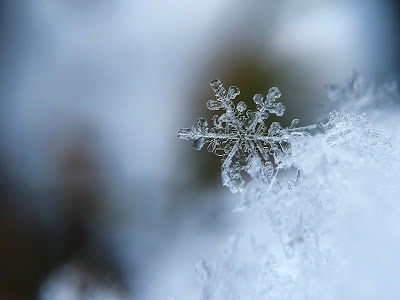https://phys.org/news/2021-01-theory-snowflakes.html
Credit: Pixabay/CC0 Public Domain
Scientists have discovered what drives the delicate and complex microcosm of tiny terraces, pyramids and craters found on the surface of ice. These miniature structures, hidden beneath a thin premelting layer of water, develop and evolve because of a dynamic interplay between the gas, liquid and solid phases—which exist simultaneously.
In a new paper titled "How ice grows from premelting films and water droplets," published in Nature Communications, researchers have modelled the process of early-stage snowflake creation.
Dr. David Sibley, of Loughborough's School of Science, said the structure of the ice shape is dependent on a number of factors including surrounding temperature and pressure conditions. He said, "Ice growth is a dynamic process that can occur either by being fed by water that freezes, or through the freezing of water vapour from the surrounding air. However, these are more similar than they at first they appear, since the interface between ice and air has on it a microscopic liquid film of water—sometimes termed a premelting layer. The way in which water is transferred between these vapour, liquid and solid phases is not well understood. However, our new mathematical model explicitly takes into account the premelting layer, giving new understanding of its involvement in the ice-growth process."
Understanding how ice crystals grow and the formation of structures—such as snowflakes—will allow scientists to learn more about climate change. Dr. Sibley said, "Snowflakes at an early stage are made of one single ice crystallite. Their shape is important to predict the scattering of radiation from the Sun and has an impact on global warming. The shape of ice crystals is dictated by the growth rates of different crystal facets, and our theory helps in understanding how the growth rates change with the surrounding humidity. At low humidity ice grows mainly from colliding vapour molecules, but if humidity is large enough, it grows directly from a thick premelting film, by the same mechanism of ice growth from bulk undercooled water."
Recommend this post and follow The birth of modern Man
https://disqus.com/home/forum/lifeofearth/


No comments:
Post a Comment
Stick to the subject, NO religion, or Party politics